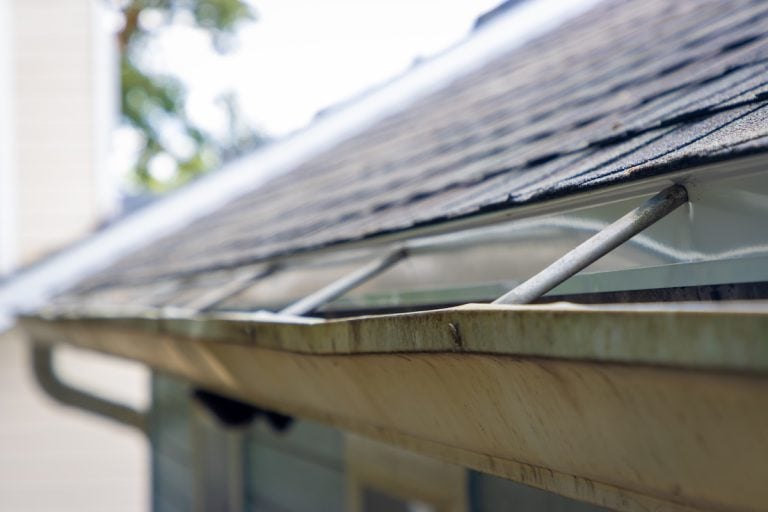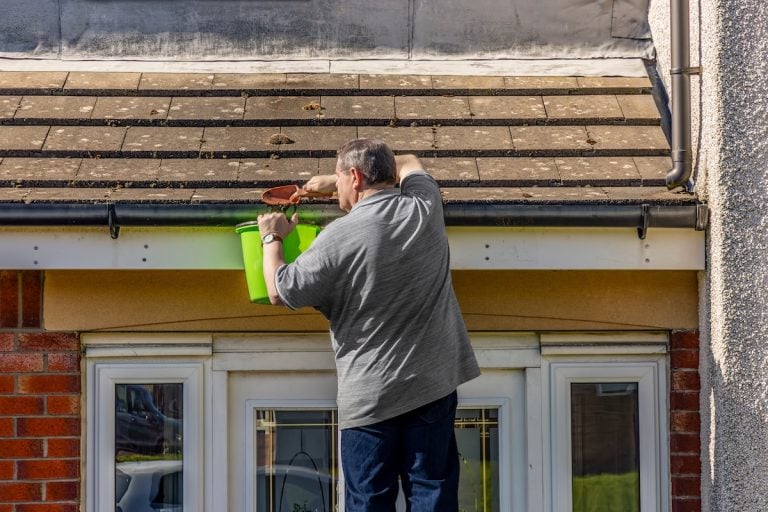Keeping your gutters clean and clog-free is key to protecting your home from water damage, and the best gutter guards in 2025 are designed to do just that—with less hassle and maintenance for homeowners. Whether you’re tired of seasonal gutter cleaning or worried about debris buildup causing overflow, investing in the right system can make a big difference.
In this blog, we’ll cover:
- Top-performing gutter guard types for homes in 2025
- Pros and cons of each option
- What to consider before choosing a system
🍂 Why Gutter Guards Matter
Protection From Water Damage
Gutter guards help prevent leaves, pine needles, and debris from blocking your gutter system. A clogged gutter can cause water to overflow and damage fascia boards, siding, and even your home’s foundation.
Reduced Maintenance
- Fewer cleanings: Quality guards reduce how often you’ll need to clean your gutters.
- Safer upkeep: Less climbing ladders to remove soggy leaves or muck.
- Lower repair costs: Helps prevent ice dams, rot, and erosion.
Year-Round Performance
Gutter guards protect your home in every season—whether it’s keeping fall leaves out, preventing ice buildup in winter, or filtering seed pods and pollen in the spring.

🤔 Types of Gutter Guards: What’s Available?
There are several gutter guard designs, each suited for different needs and budgets. Let’s look at the main categories:
Mesh Screens
Fine stainless steel or aluminum screens that allow water in while keeping out small debris.
Reverse Curve (Surface Tension)
Curved metal or plastic covers that channel rain into the gutter while deflecting leaves and debris.
Brush Inserts
Cylinder-style bristles that sit inside the gutter and block leaves while allowing water to pass through.
Foam Inserts
Porous foam blocks fitted into the gutter channel to filter water while trapping debris on top.
Micro-Mesh Systems
Ultra-fine mesh materials attached to the gutter with high-performance filtration and added durability.
✅ 6 Best Gutter Guards To Consider in 2025
- LeafFilter Gutter Protection
- Type: Micro-mesh stainless steel
- Durability: Built for long-term use with surgical-grade steel
- Pros: Excellent filtration, keeps out even small particles
- Cons: Higher cost, professional installation required
- Gutter Helmet
- Type: Reverse curve design
- Durability: Heavy-duty metal with textured finish
- Pros: Strong performance in heavy rain, built-in roof edge support
- Cons: More visible from the ground, not ideal for low-slope roofs
- HomeCraft Gutter Protection
- Type: Raised mesh design
- Durability: Powder-coated aluminum frame and stainless steel mesh
- Pros: Efficient water flow, prevents buildup of pollen and seeds
- Cons: Less widely available in some regions
- Raptor Gutter Guard
- Type: DIY-friendly micro-mesh
- Durability: Stainless steel mesh with aluminum frame
- Pros: Easy installation for handy homeowners, affordable
- Cons: May not be suitable for heavily wooded areas
- Amerimax Lock-In Gutter Guard
- Type: Mesh screen
- Durability: Steel mesh fits tightly into 4″, 5″, and 6″ gutters
- Pros: Budget-friendly, compatible with most gutter types
- Cons: Needs occasional maintenance, not as durable as premium systems
- GutterBrush Simple Gutter Guard
- Type: Brush insert
- Durability: UV-resistant bristles
- Pros: Inexpensive and easy to install
- Cons: May require frequent cleaning in high-debris areas
📋 How to Choose the Right Gutter Guard for Your Home

Consider Local Debris Types
- Pine needles: Require fine mesh systems to block small, sharp needles.
- Large leaves or acorns: Screen and surface tension guards work well.
- Pollen and grit: Micro-mesh is ideal for filtering tiny particles.
Look at Your Roof Pitch and Gutter Design
- Steep roofs: Use guards that can handle high water flow.
- Low-slope roofs: Avoid reverse curve systems that may redirect water.
- Older gutters: Check compatibility and condition before installing guards.
Balance Performance and Budget
- Premium systems: Offer long-term protection and warranties but cost more.
- DIY-friendly guards: Affordable and good for basic protection, but may require more frequent maintenance.
✅ Pros and Cons of Installing Gutter Guards
Pros
- Cleaner gutters year-round: Reduces buildup and clogs
- Protects your home’s exterior: Prevents water from backing up under shingles or dripping behind siding
- Saves time and money: Less frequent cleanings and fewer repairs
Cons
- Upfront cost: Professional systems can be expensive to install
- Not maintenance-free: Some debris may still collect on top
- Compatibility issues: Not all guards work with every type of roof or gutter system
❓ FAQs About Gutter Guards

Will I still need to clean my gutters?
- Yes, occasionally: While gutter guards reduce debris buildup, periodic inspection and light cleaning are still recommended.
Do gutter guards prevent ice dams?
- Not directly: They can help by keeping gutters clear, but proper attic insulation and ventilation are key to preventing ice dams.
Are gutter guards worth the investment?
- For many homeowners, yes: Especially in areas with lots of trees or seasonal debris. They reduce hassle and protect your home long-term.
💪 Are Gutter Guards Right for You?
The best gutter guards in 2025 offer improved protection, smarter design, and better durability than ever before. From DIY mesh screens to high-performance micro-mesh systems, there’s an option for nearly every home and budget. If you’re tired of cleaning your gutters or worried about water damage, this could be a smart investment in your home’s health.
Working with a knowledgeable local professional can help you choose a guard system that fits your roof, gutter style, and climate.
Contact Roof Medic today to talk to a trusted roofing expert about the best gutter protection for your home. Whether you’re replacing your gutters or adding a new roof, we’ll help you make the right call with confidence.




